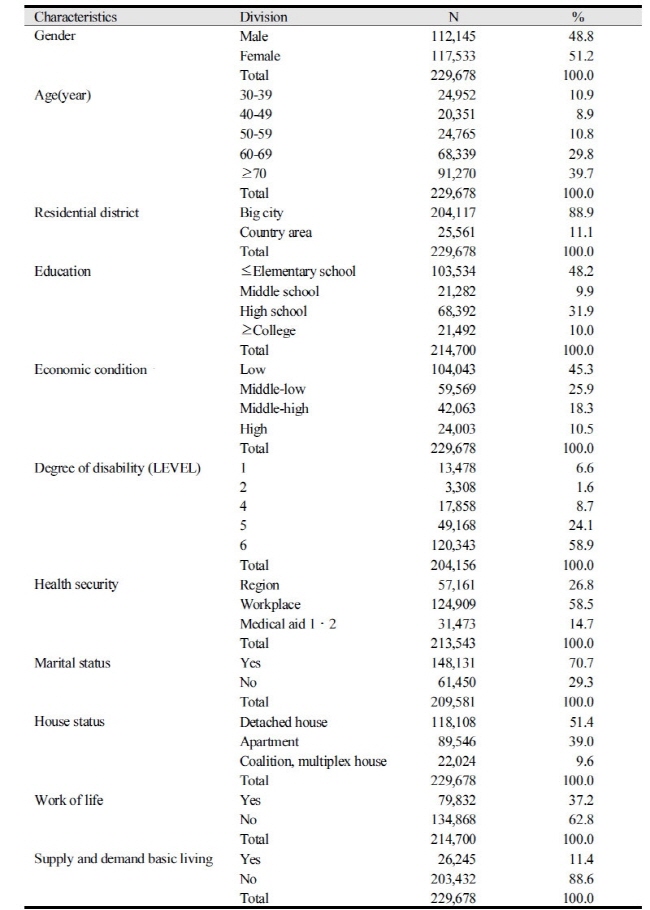Abstract
Objectives: This study aimed at helping oral health prevention of the blind and related management plan, which is defined as the influence factors between missing and filled permanent teeth index and general feature and oral health behavior of the blind in Korea (estimates 229,678 persons) using data of the 6th Korea National Health and Nutrition Examination Survey from 2014 Korea Centers For Disease Control and Prevention. Methods: The blind over the age of 30 were selected as study subjects who have conducted health survey and dental inspections in KNHANES VI-2. Estimates of the subjects were 229,67 persons. For analyzing data, general linear models: GLM and covariance analysis were conducted to identify the relation between general feature and oral health behavior and missing and filled permanent teeth index. SPSS 21 statistical program was used, which is possible to conduct complex sampling design, and the significance level was 0.05. Results: The missing and filled permanent teeth index was 8.58 points. Regarding the results of the analysis, R-squared of the missing and filled permanent teeth index depending on general features of the blind was 0.839 points, which shows gender, age, residence, education level, individual income, disability rating, kinds of health insurance, marital status and recipient of basic living had an effect on the missing and filled permanent teeth index. R2 of the missing and filled permanent teeth index depending on oral health form of the blind was 0.728 points, which shows oral examination, dental treatment, smoking and toothbrushing after lunch had an effect on the missing and filled permanent teeth index. Conclusions: With the result of this study, we found the oral health actual condition of the blind in Korea. Therefore, it is considered that the government needs to introduce the personalized oral health education program to maintain oral health of the blind and to develop a program that uses braille and voice device which enables to access and utilize to improve oral health behavior that the government could use it as a reference to establish the policy plan.
Figures & Tables

Table 1. The socio-demographic characteristics of the subjects


